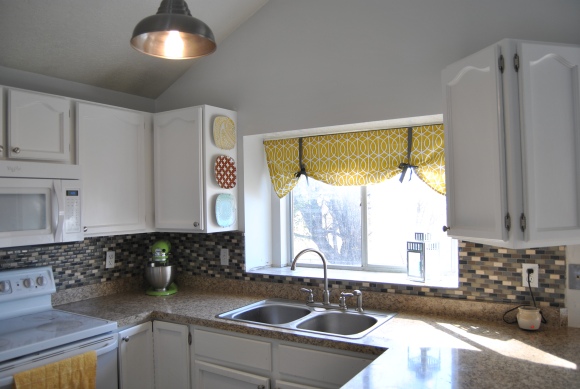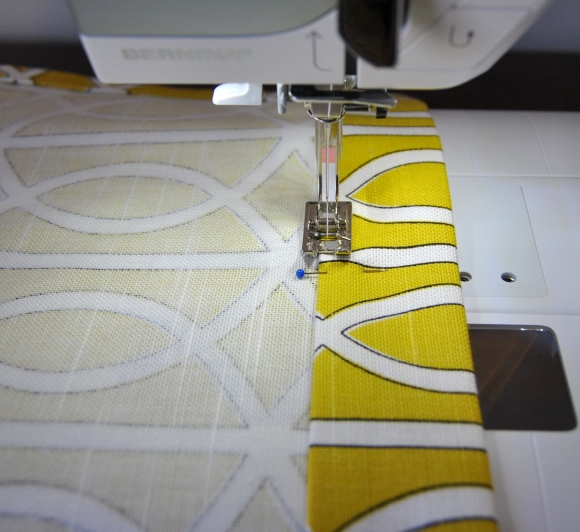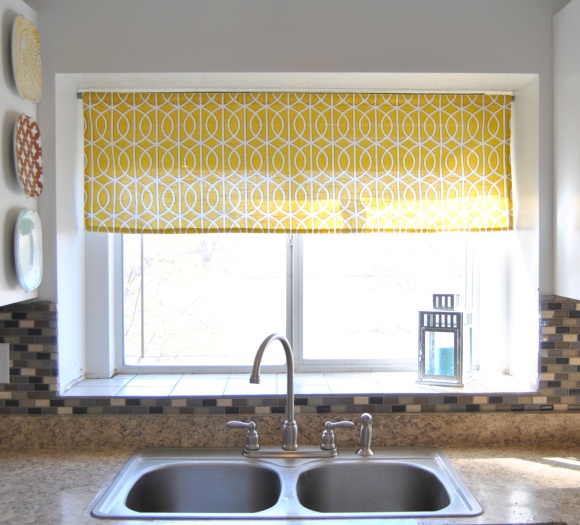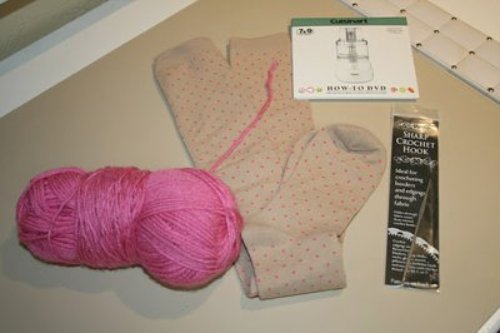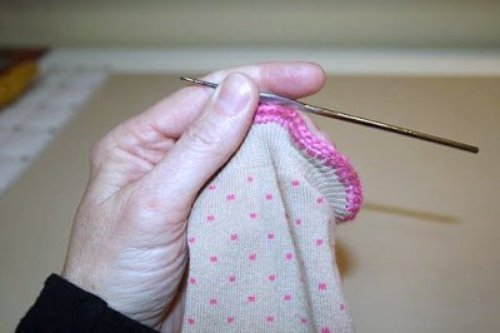My husband and I recently bought our first home and have been working our tails off renovating it. The bulk of the work has gone into the kitchen, which was a touching homage to outdated 80s and 90s style. Thankfully, there weren’t any major issues to repair, but from the heavily worn-out blonde laminate flooring to the honey oak cabinetry to the baby blue countertops–yes, you read that correctly–it needed some serious updating.
After installing new dark wood flooring, repainting the cabinets to a crisp white, replacing the light fixtures, sink, and especially the unusual countertops, we had a fresh-looking kitchen that was a lovely blank slate . . . but it was in serious need of some color. A bright and happy curtain on the picture window above the kitchen sink seemed like a great way to introduce some personality to the room.
Since I have no plans to actually use this curtain as a true Roman shade, I came up with a simpler, easier way to create the look of a Roman shade with much less work involved. It was quick and easy and only took about an hour to pull together. And I love the vibrant color and pattern it brings into my kitchen!
Start by measuring your window–mine was 53″ horizontally, and I wanted my shade to fall about 17″ vertically. Add 2″ to your horizontal measurement for seam allowance, and 3.5″ to your vertical measurement for seam allowance and to sew a ‘pocket’ for the curtain rod to pass through. (So, for my window, this came to 55″ x 20.5″.) Iron your fabric well, and make your cuts. (My fabric happened to be 55″ exactly, including selvage, so I only had to cut the vertical measurement.)
On to the sewing! We’ll start with the two horizontal side seams. Fold the short sides (the 20.5″ long sides) in 1/2″ and press; fold in another 1/2″ again, press, and pin.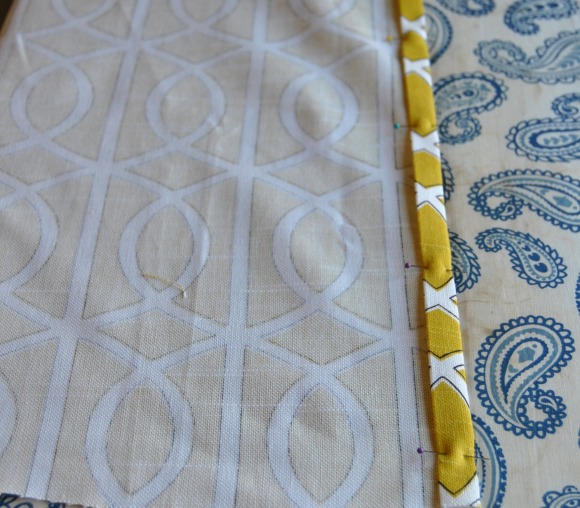
Use your sewing machine to stitch down both sides, close to the inner folded edge.
If your fabric has a top end (mine didn’t), fold the top long edge in 1/2″ and press. Then fold it in another 2 inches, press, and pin. Stitch along the lower folded edge, creating a pocket.
Now fold up the bottom edge 1/2″ and press, fold another 1/2″, press and pin, and stitch (just like the sides).
Done with the sewing! You should have a nicely hemmed rectangle, ready to hang. I used a tension rod to hang this in my window space. If you like, you can of course leave the curtain just as it is, hanging straight.
Or if you prefer the Roman shade look (I do!), it’s simple to do. Just find a ribbon that coordinates with your curtain fabric and cut two pieces of it that are twice the length of your curtain, plus a few inches (I just draped the ribbon over the curtain after I hung it up, let it dangle a few inches past the curtain length, and cut it). Loop the ribbon over the curtain, cinch it up until it’s a length you’re happy with, and tie a bow. You can either roll the fabric a bit inside the ribbon loops, or just fold it a little so that it sits nicely in the ribbons, and you’re all set!
If you’d like to see more pictures of my kitchen renovation, DIY projects, etc., come visit me at Maybe Matilda!
— Rachel —
(Linking up this post at Brassy Apple, Making the World Cuter, Keeping It Simple,)
